
Leathersellers' Hall
The Seventh Hall
Leathersellers’ Hall is the seventh since the Leathersellers’ Company was incorporated by royal charter in 1444. Officially opened by the Earl of Wessex in 2017, the building’s 1920s façade gives no indication that inside is a new Livery Hall, designed by Eric Parry Architects on a narrow site abutting St Helen’s church. The previous Hall, a 1950s building, and its three predecessors, all lay on the opposite side of St Helen’s Place. The new Hall returns the Company to its historic roots and is in the same location occupied by the second Hall (part of the former Priory of St Helen) from 1543 to 1799.
Words by Jerome Farrell and Kate Higgins
The Hall entrance
Either side of the entrance are bronze statues of a ram and a roebuck, the Company’s heraldic ‘beasts’ that appear as the supporters of its coat of arms. They were made by Mark Coreth in 2000, as a commemoration of the Millennium celebrations that year, and formerly flanked the entrance to the previous Hall.
The magnificent wrought-iron gates were originally made in 1878 by J. Starkie Gardener, for the fifth Hall, and are therefore now nearly 130 years old. They were entirely hand-wrought without the use of castings or machinery of any kind, and are a great feat of workmanship. The new canopy above has a bronze top with a vitreous soffit and supports two flambeaux, lit for special events at the Hall.
The entrance lobby has a floor with a grey granite finish, containing a simple version of the Company’s coat of arms with its three roebucks. The focal point is the modern cast-iron fireplace with a mirror above, and vitrines either side displaying a selection of items from the Company’s collection.
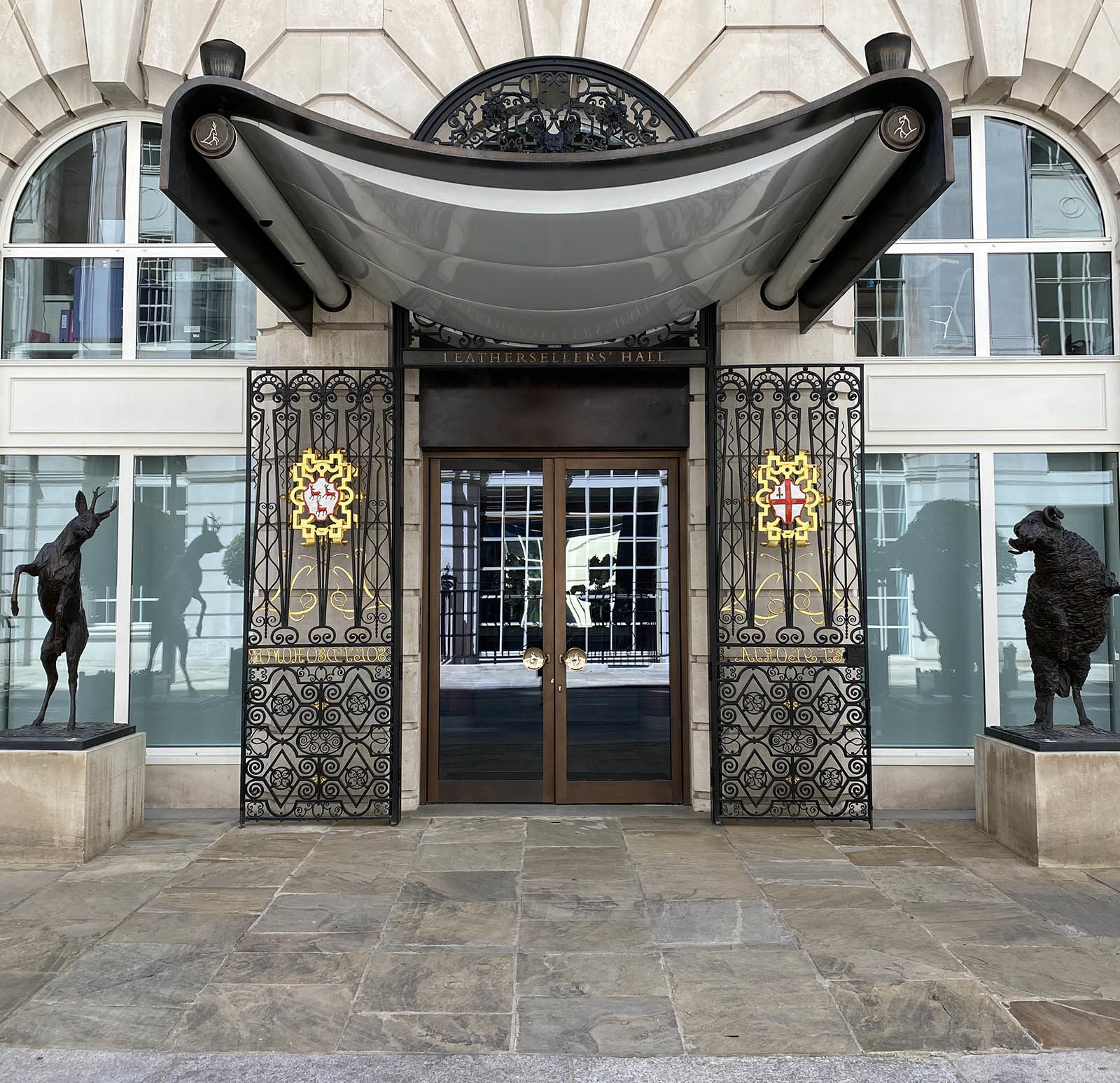
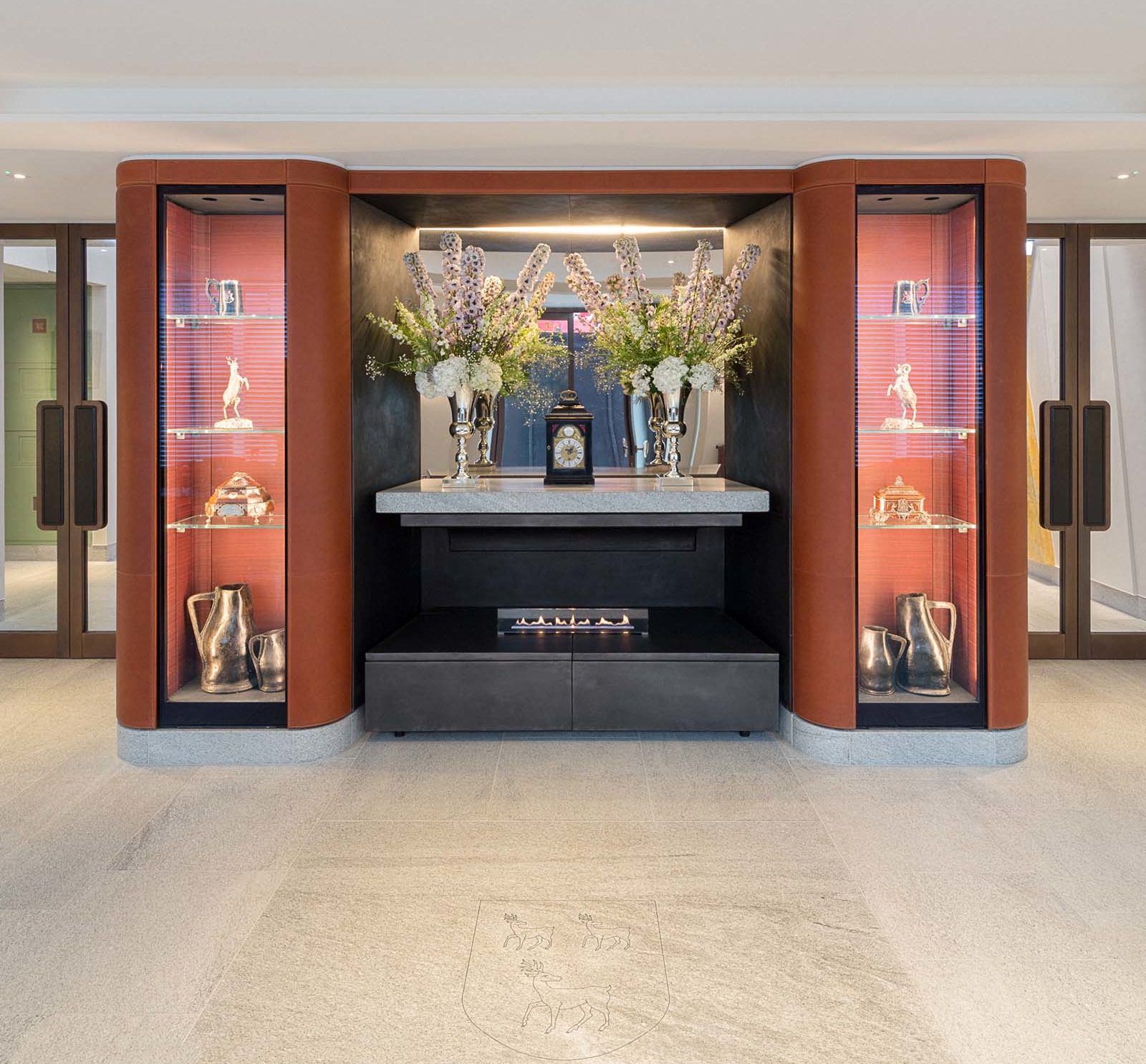
The Court Room
The Court Room has walls of American walnut and a floor covered with a fine Axminster carpet, woven in the 1950s for the previous Hall and containing the coats of arms of the Leathersellers as well as those of three other Livery Companies with leather interests, the Glovers, the Saddlers and the Cordwainers. Royal coats of arms appear at each end of the carpet, which is patterned with lively representations of many animals that can be used as a source for leather.
The two glass chandeliers date from the 19th century and came from the previous Hall, the central court table is in European walnut, and in one corner of the room is an antique porter’s chair. Above the Master’s chair a tapestry is displayed, showing the Company’s coat of arms. It was made for the opening of the previous Hall in 1960, and was designed by Robin and Christopher Ironside, the latter of whom also designed the UK’s first decimal coinage. It was woven at the Dovecot Studios in Edinburgh.
A portrait of Henry VI, who gave the Company its first charter in 1444, hangs on one wall. A dendrochronological test on the wooden panels on which this is painted has revealed its date to be late Elizabethan, and showed an exact match with the famous portrait of Richard III in the National Portrait Gallery, meaning they were both painted on wood from the same tree.
The Company’s three Charters are hung on the Court Room walls in places of honour. The first one of 1444 is beautifully illuminated and marks the foundation of the Leathersellers’ Company. A second Charter of 1604 was issued by King James I, with provision for a Court of Assistants. This Charter is also decorated in beautiful colours, with illustrations of Liverymen in their gowns. The original wax Great Seal of James I is still attached. The third Charter of 1685 was imposed on the Company by Charles II at a time when the monarch was trying to extract money from the City of London by unpopular means, and in 1689 (under William and Mary) the Company unilaterally revoked this Charter by breaking the royal seal, thus reverting to the earlier 1604 Charter as its source of authority. Fragments of the broken seal have been re-formed as an approximation of what the original looked like. All three Charters have been recently conserved and re-framed, and are held in place by over 300 micro-magnets.
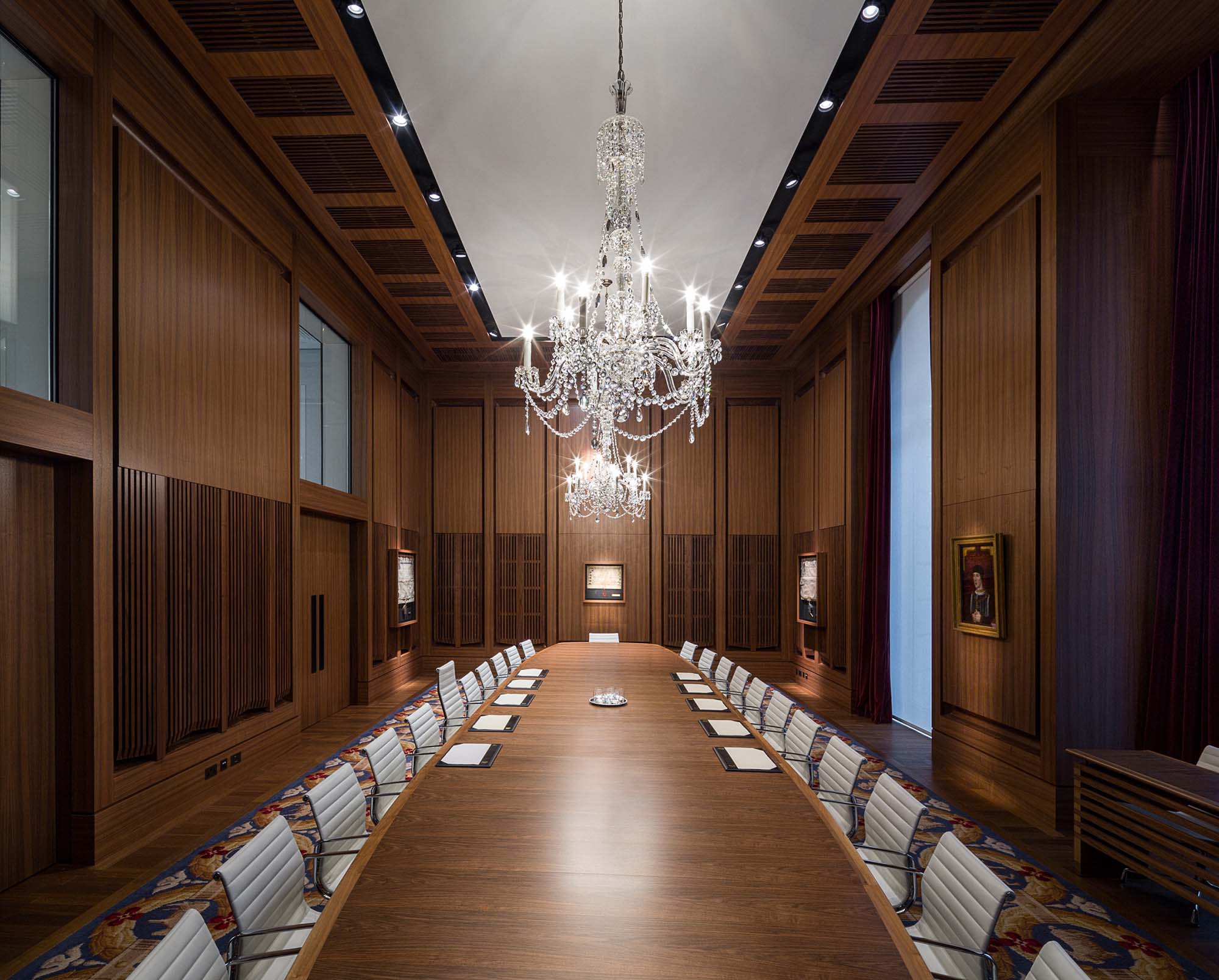
The Reception Room
This light and airy room is completely contemporary in feel, with a central blue-and white glass sculpture by the renowned American artist Dale Chihuly as its focal point. A circular bronze table with a glass centre, made by London Bronze, contains a Latin inscription around its edge, a key phrase from the Charter of Incorporation of 1444. The carpet was designed by the architect to complement the colours of the Chihuly sculpture hanging above it. Vitrines around the walls display a selection of the Company’s silver and leather artefacts. Four sofas by Jaan with black-and-white cowhide covers are set around the room, and there is a grand piano in one corner.
A large window on the east side of the Reception Room gives views on to the side wall of the medieval church of St Helen. A stained-glass window in the church, clearly visible from this room, shows William Shakespeare, who lived at one time in this parish – the precise location is not known, but it must have been somewhere close to our Hall.
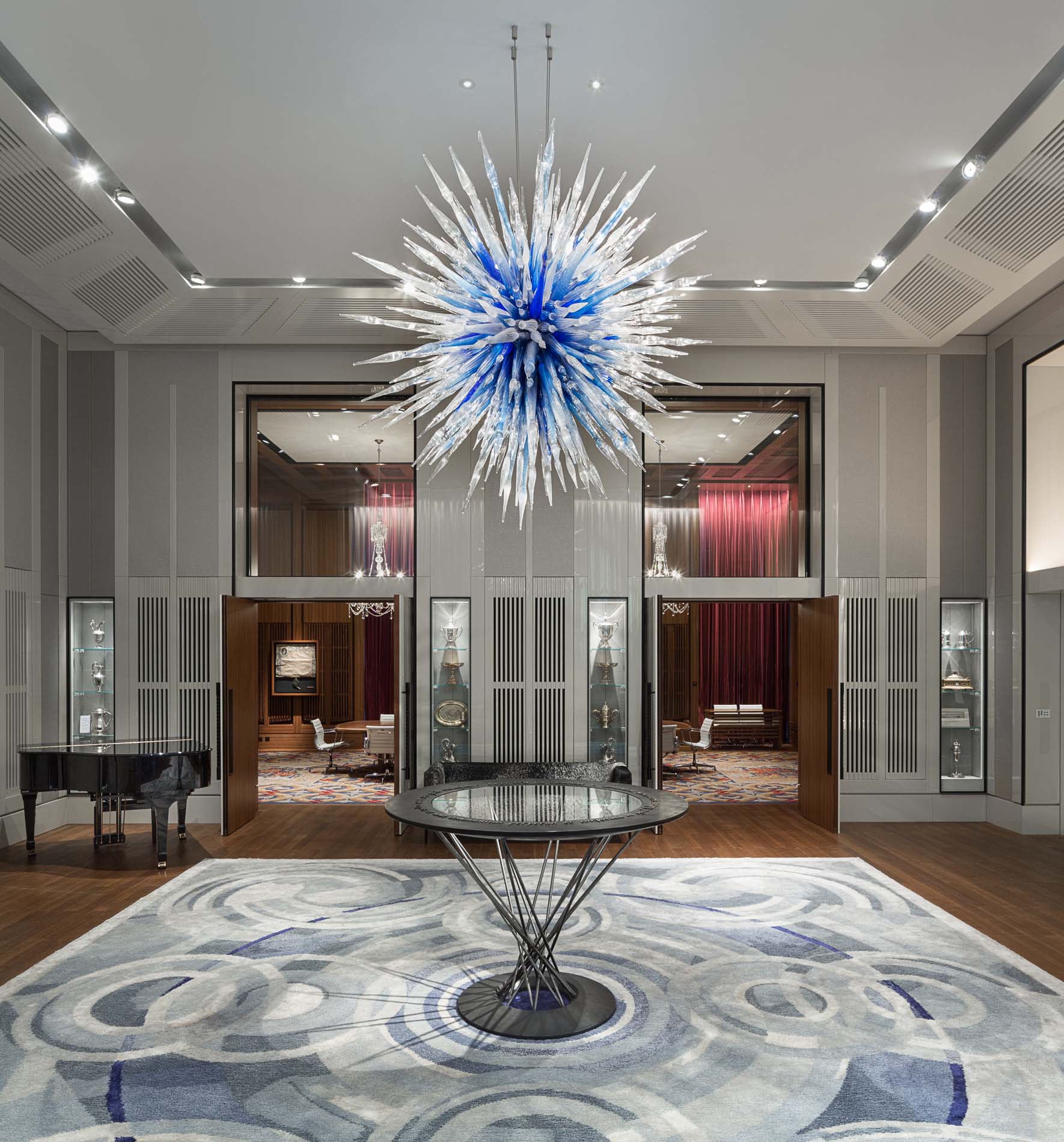
The Library
A corridor lined with leather-covered panels in pale green and maroon (retained from the previous Hall) leads along to the Library, a room providing an intimate, comfortable space for small meetings, lunches, or simply reading and relaxing. The walls are lined with oak and above the mantelpiece is an oil painting by the 18th century artist William Marlow, showing a view along the Thames from Vauxhall, with Lambeth and the City of London in the far distance.
The Colfe Library, a special collection of over 500 15th-18th century rare books, is housed in climate-controlled bookcases to ensure the best conservation for these ancient volumes. Founded in 1652 by inspirational Vicar of Lewisham Abraham Colfe, partly for use by scholars at the school he founded in Lewisham and partly for free use by members of the local community, the first books for this Library were donated by Leathersellers. There is a predominance of books on theology, philosophy and the classical languages of Latin and Greek, and two of the books once belonged to Archbishop Thomas Cranmer.
A pair of rare Flemish paintings hang on the wall opposite the Colfe Library. They were painted by Gillis Mostaert in the late 16th century and show various stages in the leather-making process, an unusual theme for art from any period. It is thought these were probably painted for a guild hall in the Low Countries, perhaps for a leather-related guild in Bruges or Ghent.
Small portraits of George Humble and James Bunce, two 17th century Masters and benefactors, hang on other walls and are interesting survivals of the past. In 1819 a fire destroyed the Company’s third Hall and the assistant Clerk and Beadle laboured through the night to save what they could from the flames. These are the only vestiges of the many large portraits lost at that time.
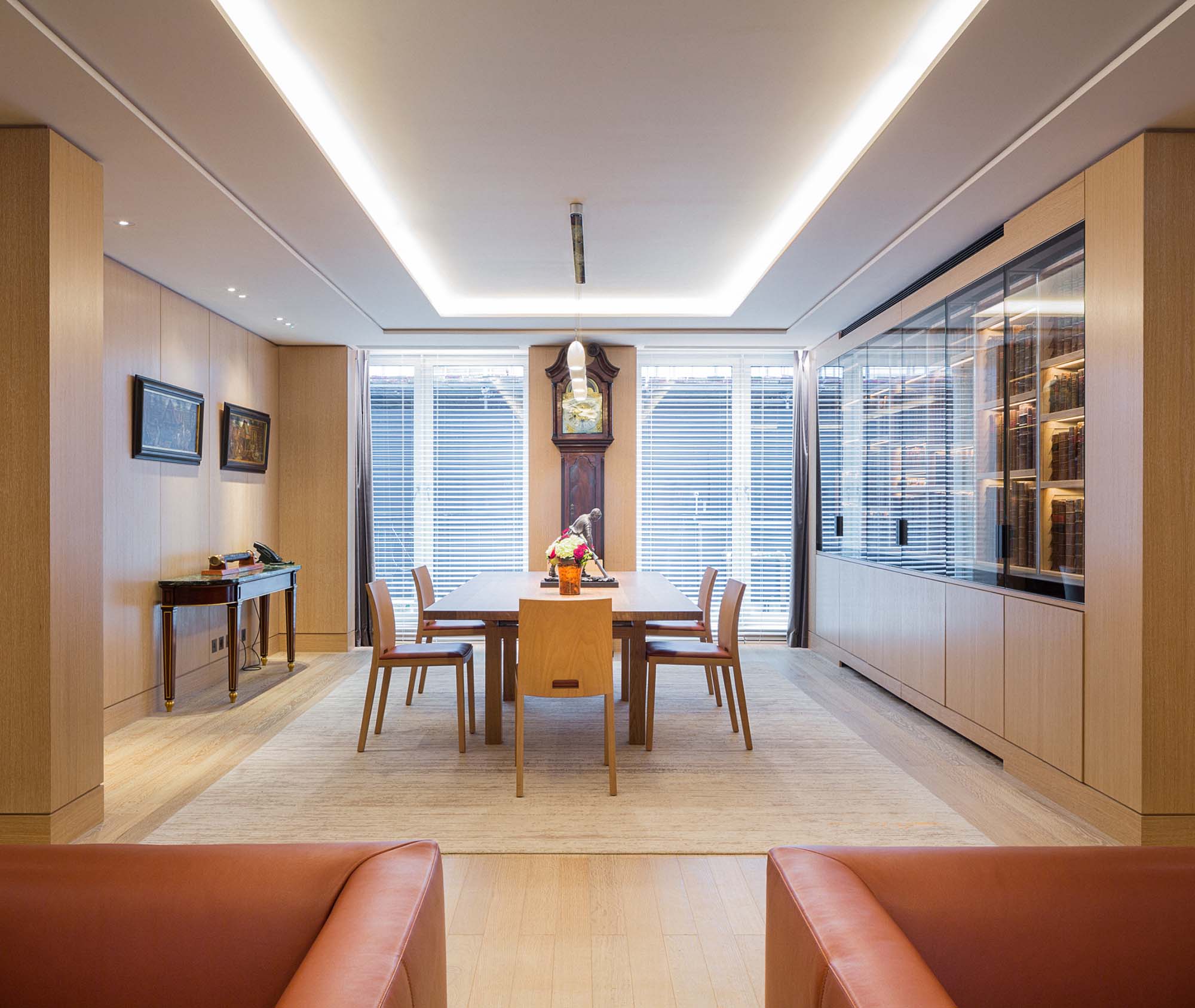
Staircase
At the top of the spiral staircase leading down to the Dining Room is a large stained glass window by Leonard Walker, made in 1937. It depicts Henry VI and was saved from destruction in World War II by being dismantled and removed from London two years after it was installed in the fifth Hall, which was destroyed in May 1941 during the Blitz. The window was then installed in the sixth Hall but was badly damaged by the Baltic Exchange IRA bomb in 1992. Skilled conservators were able to restore it afterwards. Luckily it had not been reinstated when a second IRA bomb exploded the following year, in Bishopsgate. The window is now positioned and backlit so that its deep, rich colours can be seen at their best.
The scagliola pilasters were also saved and transferred from the old Hall, where they had been set in a conventional pattern around the Reception Room. Here in the new Hall, however, their effect is totally different. The architect Eric Parry has imaginatively scattered them, seemingly at random, around the walls of the stairwell, creating a sense of surprise and elation at something so unexpected.
The stair carpet is coloured mauve. This acts as a reminder that one of the most famous Masters of the Company was Sir William Perkin, a chemist who discovered the world’s first synthetic dye – a type of purple dye that he named mauveine – in 1856.
At the bottom of the staircase, having passed the walls lined in leather by Bill Amberg, the focal point is a stained glass window dated 1994. It was made to mark the 450th anniversary of the Company and it includes, among others, references to the animals which provide us with leather, to the plants and trees which are used in traditional tanning, and to the educational work to which the Company has had a long-term commitment through its schools and through supporting students in higher and further education.
Either side of the window are boards painted with the names and dates of the Company’s Masters, from the earliest days right up to the present. On a wall opposite is a splendid oil painting by William Marlow showing the River Thames and Blackfriars Bridge, with St Paul’s Cathedral dominating the city skyline. It dates from 1769 and although the artist painted several versions of this view, this one is the earliest. In another corner is a 16th century iron ‘Armada’ chest, purchased by the Company in 1574 for storage of valuables.
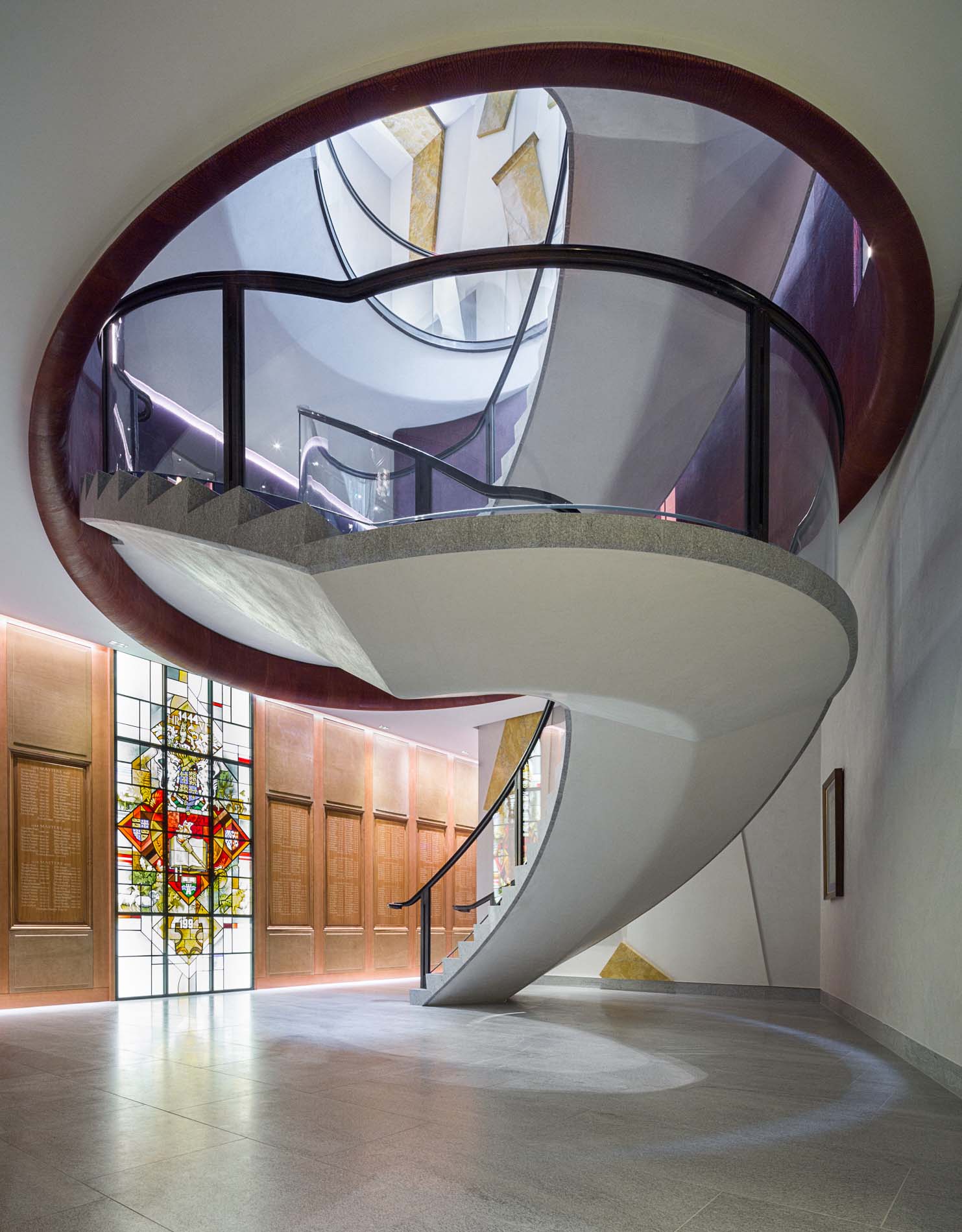
The Dining Hall
The walls are covered in American walnut and the Hall can seat up to 120 people at dinners. The main feature of this large room is the tapestry hanging along the upper part of three of its walls, above drawings of London scenes by Leon Kossoff. This tapestry was designed by Victoria Crowe and was woven at Dovecot Studios in Edinburgh. It is forty metres long and contains a wealth of interesting images and allusions in a broadly chronological sequence relating to the Leathersellers’ Company, its identity and history, leather, and many of the educational and charitable activities with which the Company has been associated through the centuries. The intense colours enrich the room and provide diners with a backdrop of great beauty, enhanced further when the tables are set with an array of silver, glassware, floral arrangements and candelabra.
The tapestry begins with images of cave art, which remind us of the use of animal hides for clothing, and ends with images of the most up-to-date processes of leather cutting and with a plan showing the outline of the new Hall superimposed over a similar outline of the very first Hall. Other references in the tapestry include the will of Abraham Colfe, through which he entrusted the Leathersellers with management of his school and charitable trust; apprenticeships and the Leathersellers’ dedication to supporting technical education; details taken from the charters of 1444 and 1604; Company treasures such as the 1638 ‘garlands’ or crowns still used annually at the installation of the new Master and Wardens; and leaves of the oak, mimosa and sumac plants, all used in traditional vegetable tanning. In the middle of the central panel is the head of a roebuck, with a suggestion to its right of the modern Gherkin building, which can be seen from St Helen’s Place and through a skylight window positioned above the spiral staircase.

Designed by Eric Parry Architects in collaboration with a number of artists, designers and makers including Victoria Crowe, Dovecot Studios, Bill Amberg and Dale Chihuly, the seventh Leathersellers’ Hall is built and decorated in a cohesive manner, and its beautifully crafted design plays imaginatively with the concept of time, particularly in its juxtaposition of ancient and modern throughout the building.
READ MORE
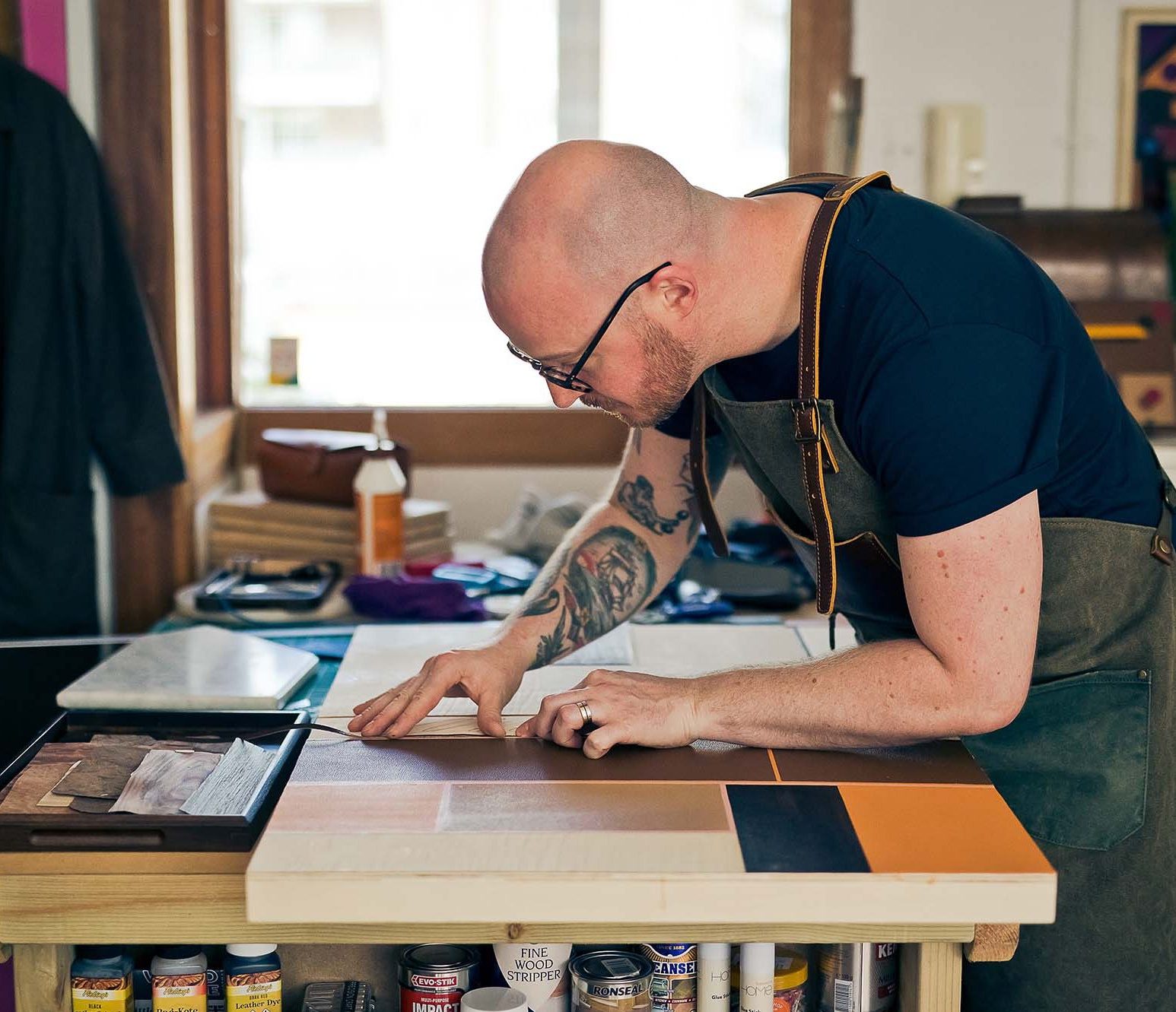
Magic Eye
Carl Fox creates puzzle-like pieces of interior art by using offcuts from luxury leather fashion brands.
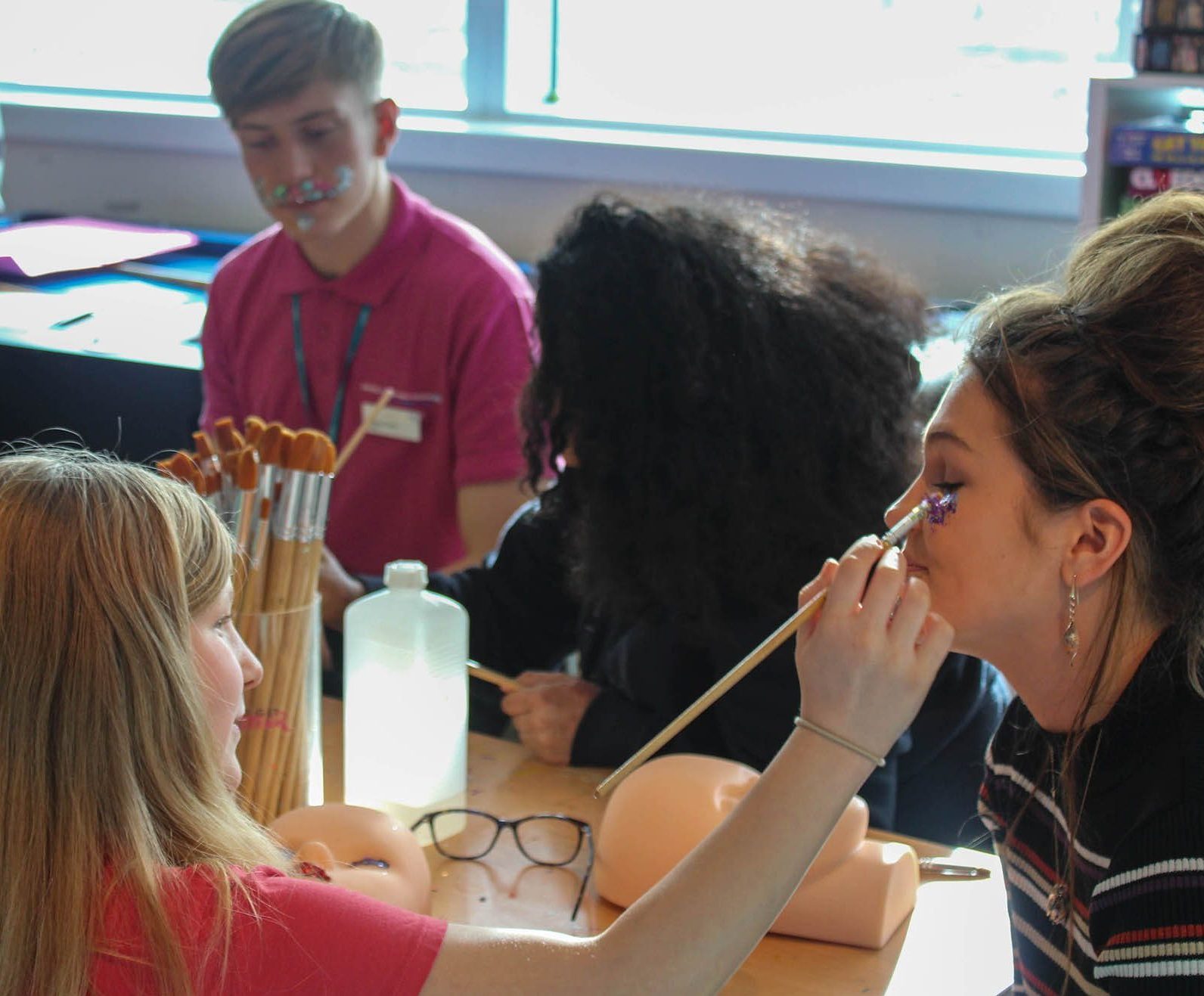
Bright Futures
Children and young people with long-term illness have little to no educational support. Bright Futures UK is harnessing the skills of volunteers to help change this.
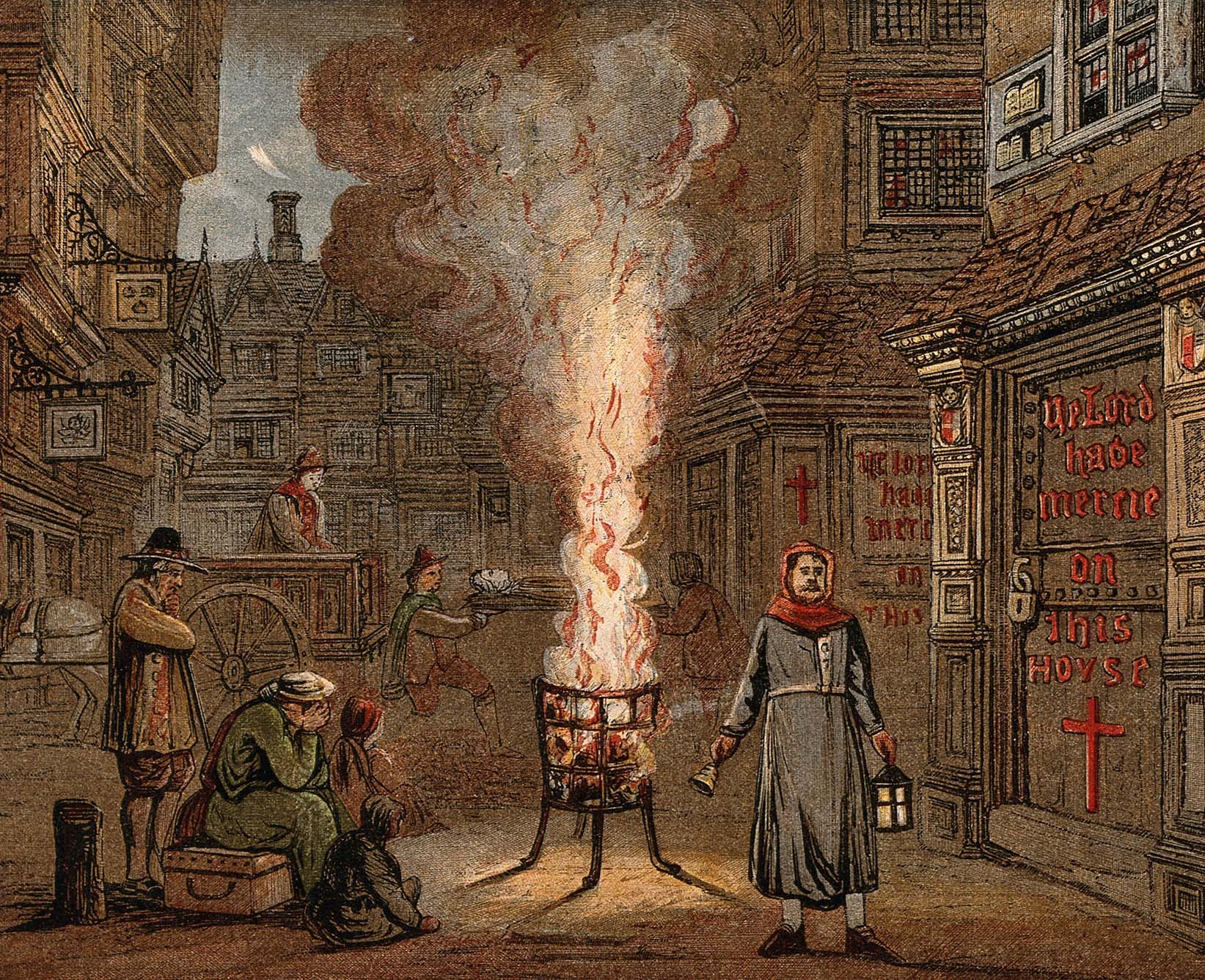
London and the Leathersellers in 1665
in 1665 London was a compact but densely populated city of around 400,000 people – and a lot of rats.